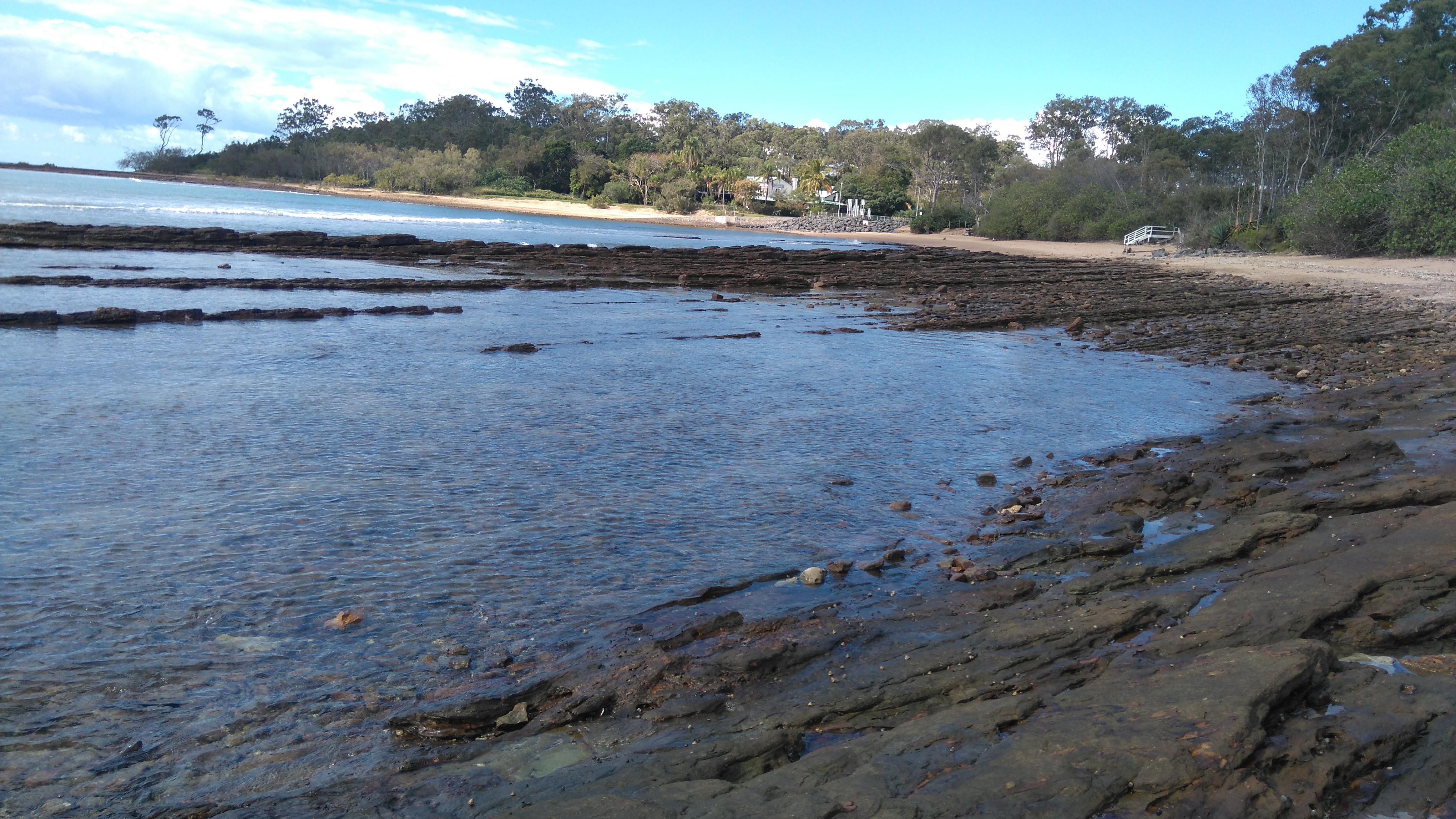|
|
Substrate compositionSubstrates originate from many different sources. Predominantly the sea floor is composed of fragments originating from the weathering and erosion of older rocks (either volcanic, sedimentary or metamorphic) mainly composed of silica, i.e. terrigenous (part of the earth[6]). Organisms and ecosystems are also involved in processing and incorporating elements such as nitrogen, phosphorous, carbon and calcium into their skeletons and tissues, ultimately breaking down in the substrate. Humans also make substantial changes to the composition of the substrate. The ocean is a major sink of carbon, including anthropogenic carbonate. During the carbon cycle vegetated marine habitats including macro-algae, seagrasses, saltmarshes and mangroves incorporate and store carbon (organic carbon[2]). Riparian vegetation also drops into streams, forming timber snags that are important shelters for fish, or washing up on the beach as wrack that provides food and shelter for beach organisms. The ocean’s pH tends to be basic rather than acidic, containing dissolved calcium. Calcifying organisms incorporate calcium carbonate (known as biogenic carbonate) into their skeletons, bodies, shells[7] and tests. Calcifiers include hard corals (Hexacorallia), molluscs, foraminiferans, serpulid polychaetes, bryozoans and urchins etc. Coral reef communities account for half of all carbonate in shallow water environments and more than 25% of the carbonate buried in marine sediments[3]. Over time the skeletons of these animals are either consolidated into limestone (e.g. rock that is over 50% calcium carbonate, such as the consolidated limestone reefs known as coral platforms) or break down into fragments on the sea floor[6]. Calcified fragments contribute to the carbonate boulders and gravel that comprise coral rubble, to carbonate gravels (e.g. shellgrit), carbonate sands etc.). On many beaches and coastlines calcium carbonate comprises a substantial proportion of the substrate. Ocean acidification is happening due to increasing levels of CO2 in the atmosphere, leading to an increase in the partial pressure of CO2 in seawater. This has direct consequences for the pH of the ocean, calcifying organisms[4], and sediments of biogenic carbonate, with major implications for erosion of coastlines composed chiefly of biogenic carbonate fragments[7]. Weathering processes from the land release substrates of terrigenous origin into the sea. The finer grained sediments (see Sediment Grain Size attribute) of terrigenous origin are known to create broad ranging disturbances, influencing particular taxonomic groups, life-history characteristics and habitat types, which is why an ecosystem-based approach is advocated to account for impacts of sediments[5]. Terrigenous suspended sediments can decrease water clarity resulting in insufficient light for photosynthesis by corals and seagrasses[2], As well as decreasing water clarity, the direct effects of terrigenous sediment smothering, freshwater volume, and trace elements (e.g. nitrogen, phosphorus, also known as “nutrients”) have consequences for particular ecosystem types i.e. favouring algae (61, 16, 59) over seagrasses (11, 12, 13, 14, 15, 48, 49, 47, 51, 50, 45, 46, 52, 53) and corals (21, 74, 76, 82, 84, 66, 68, 90, 91, 99, 78, 80, 86, 88, 70, 72, 94, 95). The following planning initiatives address reducing sediment runoff impacts from the land, including: the Reef Plan and water quality improvement plans. Wetlands retain terrigenous sediment and reduce soil erosion, as addressed in water quality plans for the Great Barrier Reef, including the Wetlands in the Great Barrier Reef Catchments Management Strategy 2016-21. Other more direct anthropogenic changes to substrate composition introduce metals, concretes, timber etc. substantially affecting their chemical makeup and the biota that colonises them. Queensland Intertidal and Subtidal Classification SchemeSubstrate composition describes the composition of both consolidated and unconsolidated substrates and also describes the biophysical and chemical processes that formed it. Regional level attributes are broken into carbonate, terrigenous (land origin), chemogenic (resulting from cementation), lithic (rocky outcrops); and anthropogenic[6]. Coffee-rock and beach rock are not distinguished from bedrock in substrate composition, however they are differentiated using the substrate consolidation attribute, being categorised with ‘intermediate’ consolidation[1]. Anthropogenic substrates (e.g. concrete, metal, rock walls, beach nourishment, dredge spoil etc) are distinguished using a Naturalness qualifier as they have changed from the original substrate composition. Attributes relate to the composition of the substrate include: the source type of rock; whether it is consolidated or not; grain size of unconsolidated substrates; and the non-living composition of the substrate. Substrate composition falls under the 'Substrate' theme of attributes for the Intertidal and Subtidal Classification Scheme. It categorises the composition of unconsolidated substrates. Attribute category table - Substrate Composition
Additional Information
References
Last updated: 23 July 2019 This page should be cited as: Department of Environment, Science and Innovation, Queensland (2019) Substrate composition, WetlandInfo website, accessed 25 June 2024. Available at: https://wetlandinfo.des.qld.gov.au/wetlands/ecology/aquatic-ecosystems-natural/estuarine-marine/itst/substrate-composition/ |

 — Department of Environment, Science and Innovation
— Department of Environment, Science and Innovation


